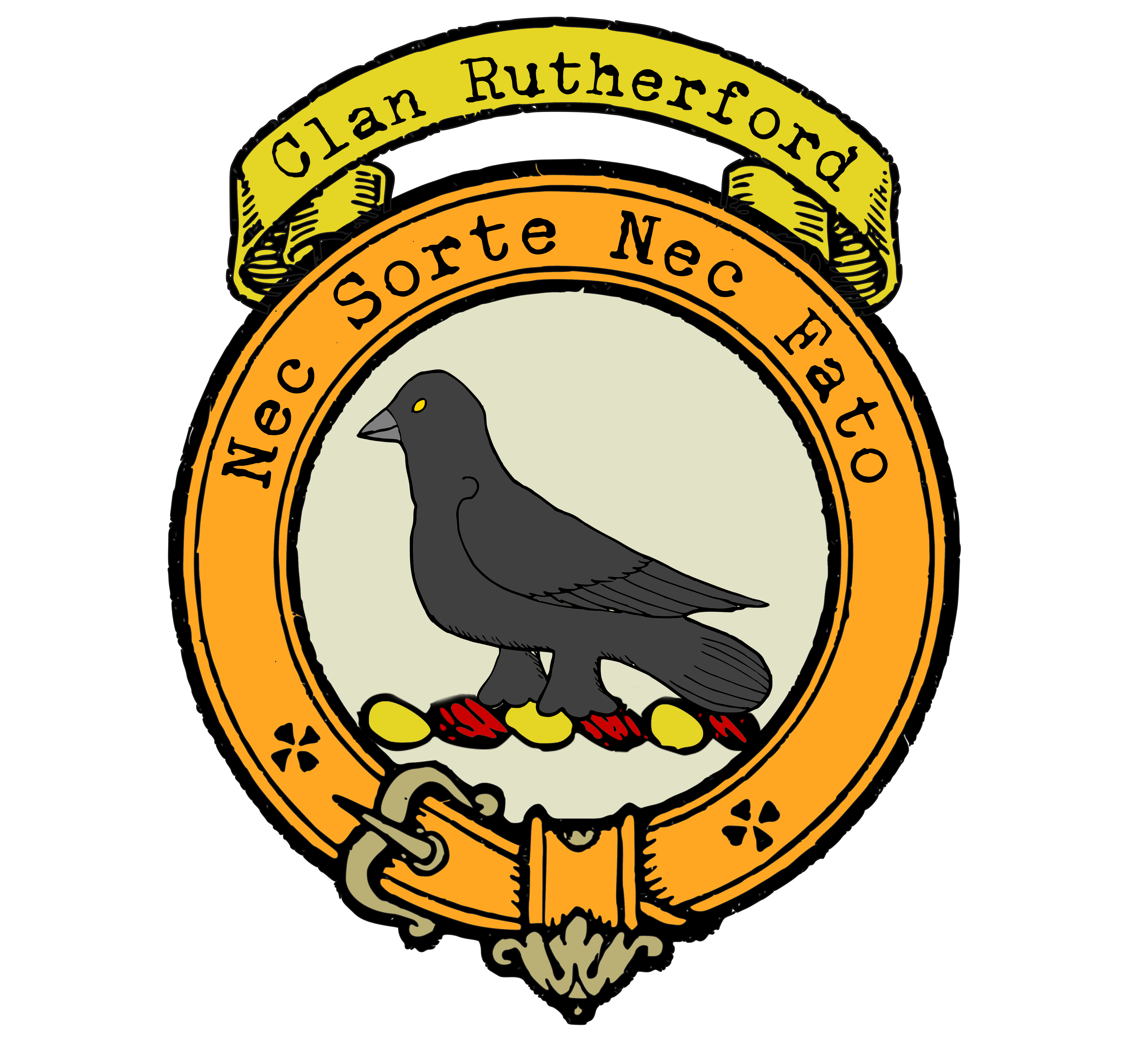Clan Rutherford
|
|
CREST: A marled Sable beaked Gules MOTTO: Nec sorte nec fato TRANSLATION: Neither by chance nor fate VARIATIONS: N/A |
| Like many Scottish clans, the origins of Clan Rutherford are shrouded in mystery and legend. Two intriguing explanations are often cited. One legend suggests that a man named Ruther played a pivotal role in guiding an ancient Scottish king across a ford in the River Tweed, securing a victory against the Northumbrians. His reward was a grant of land, which was named after the crossing that brought him such good fortune.
Another legend tells of a disastrous English attempt to cross the Tweed and attack a Scottish force on the opposite bank. The victorious Scots are said to have named the place “Rue the Ford” to commemorate the English army’s misfortune. Whether these legends are the actual source of the clan’s name is still debated, but they add an air of intrigue to Clan Rutherford’s history. The Rutherford clan has deep roots in Roxburghshire, with historical records dating back to the 12th century. Figures like Robert de Rutherford, who witnessed a charter by David I around 1140, and Sir Nichol de Rutherford, mentioned in several charters between 1161 and 1272, highlight the clan’s early prominence. In the late 14th century, Sir Richard Rutherford earned favor with King Robert III and played a role in maintaining the Scottish-English border. This was a period of intense border conflict, and the Rutherfords were known for their fierce defense of their lands and their readiness to raid Northumberland. One of the most legendary figures in Clan Rutherford’s history is Thomas Rutherford, known as the Black Laird of Edgerston. His daring attacks on the English during the tumultuous times of border disputes earned him a fearsome reputation. His most notable exploit was at the Battle of the Red Swire at Carterfell in 1575, where he played a pivotal role in rescuing the Scottish warden and defeating the English. During the English Civil War, Clan Rutherford rallied behind the cause of Charles I. They actively participated in the conflict, with one Rutherford raising a troop of horse at his own expense and fighting in England. However, their loyalty came at a cost, as they suffered significant losses at the Battle of Dunbar in 1650. In 1661, Lieutenant General Andrew Rutherford of the Rutherfords of Chatto and Hunthill was raised to the peerage as Lord Rutherford. He later served as the Governor of Tangier in Morocco and met his fate in battle in 1664. The earldom of Tevot, held by Andrew Rutherford, became extinct upon his death, with the title of ‘Lord Rutherford’ passing to a cousin. The legacy of Clan Rutherford extends into more recent history. Andrew Rutherford served as a Member of Parliament for Leith from 1839 to 1851 and held the prestigious office of Lord Advocate. He eventually became a judge with the judicial title of ‘Lord Rutherford.’ Perhaps one of the most illustrious members of Clan Rutherford is Sir Ernest Rutherford, the renowned physicist. His groundbreaking work in nuclear physics and atomic structure laid the foundation for advancements in the 20th century. Knighted in 1914 and appointed to the Order of Merit in 1925, Sir Ernest Rutherford’s contributions to science are celebrated worldwide. |
|
Citations:
|
|
Purchase @ Redbubble
Purchase @ Amazon.com
Purchase @ Amazon.co.uk

